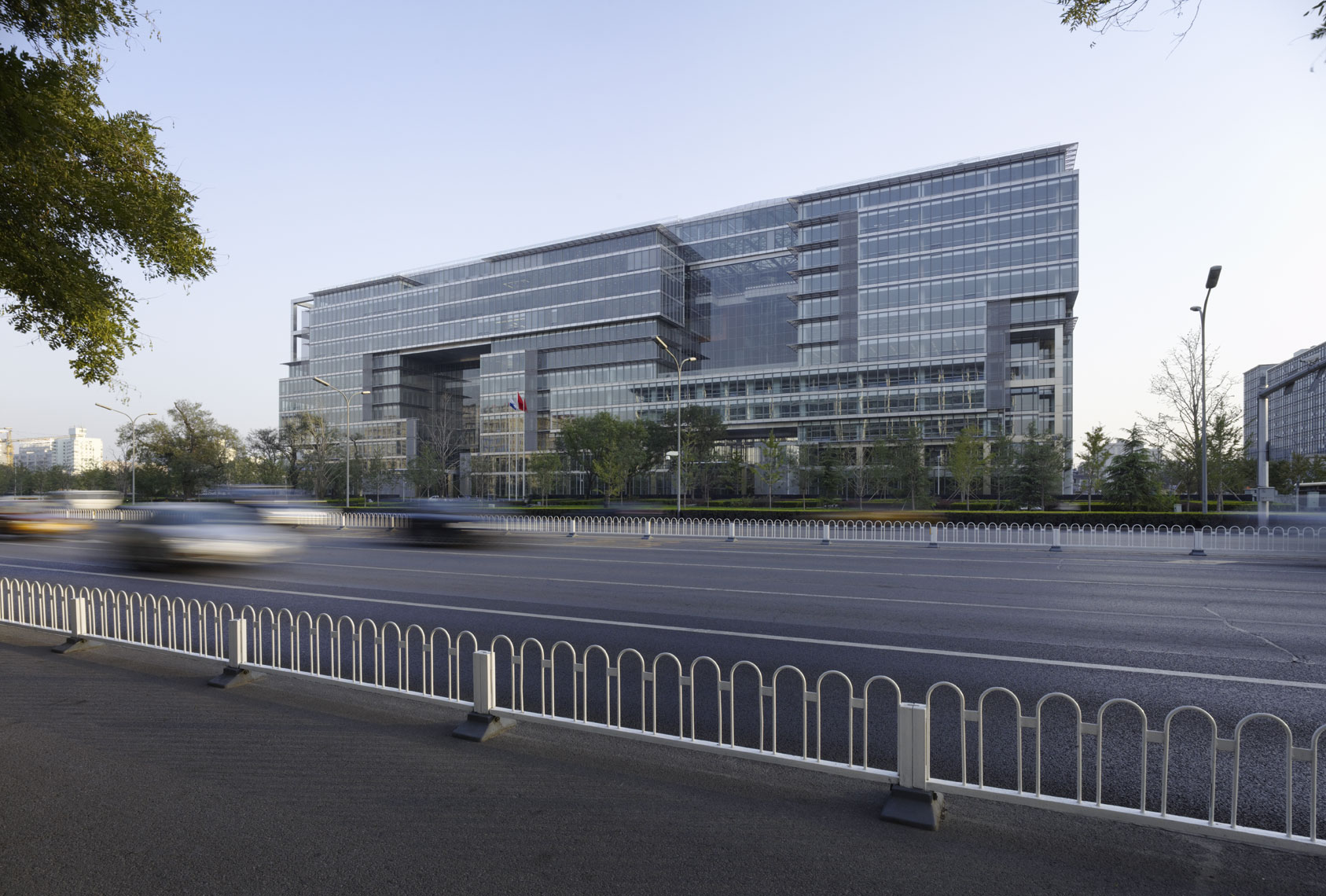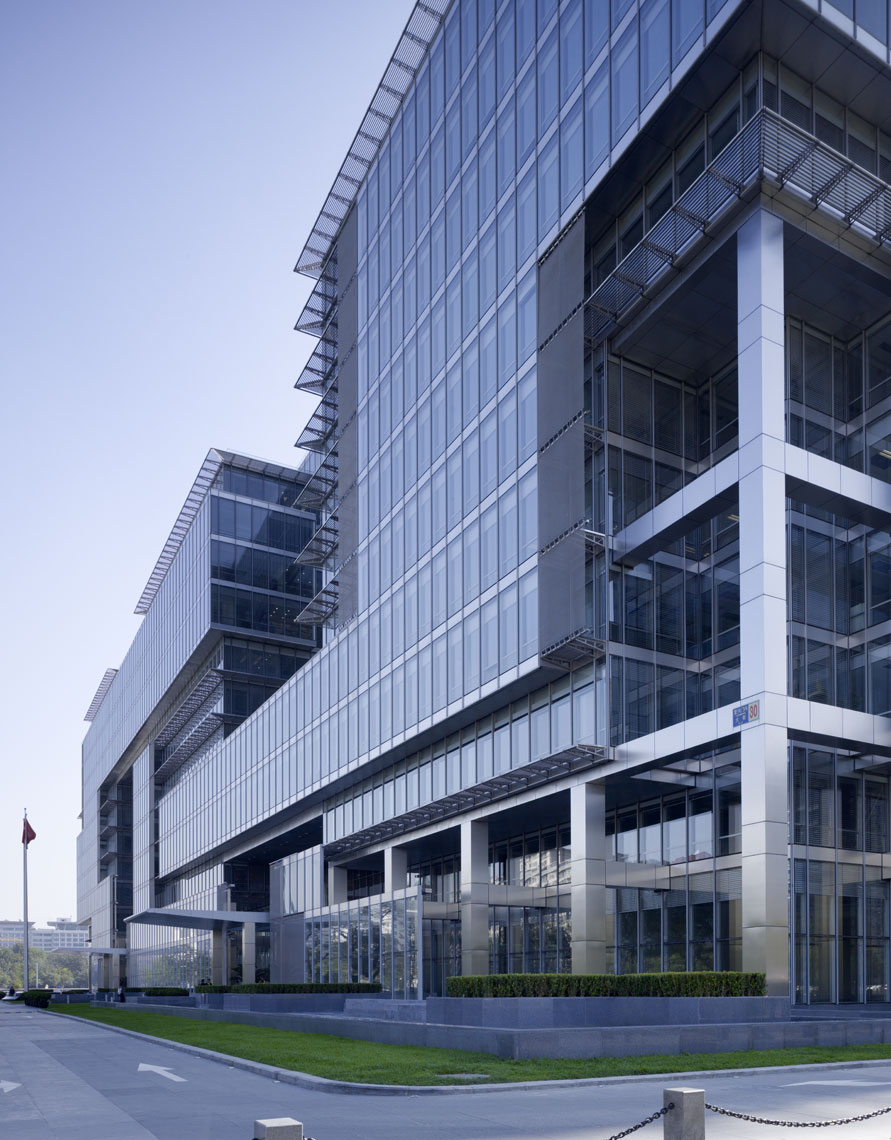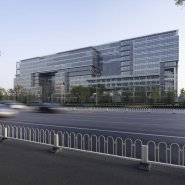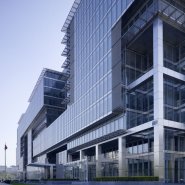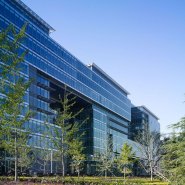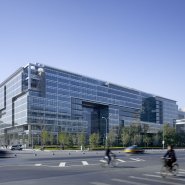Chemsunny Plaza
Located 2.4 kilometers west of the Forbidden City, Chemsunny Plaza is an integral part of the Beijing financial district and the Xidan Commercial District.
The 15-story office building features a double wall and has two major atriums and an approximate gross above grade area of 132,000 sm. The top three floors of the building are stepped back from the roof parapet in order to maintain a constant cornice line along the parade route of Chen An Avenue.
The design was influenced by the calligraphy of the Chinese alphabet in order to relate the building to the Chinese culture and ethos. The distinct L figures are derived from a long dash, a short dash, a long vertical mark and a short vertical mark.
At its most basic element, Chemsunny is three block-buildings that are linked together by suspension bridges which connect the blocks at low and high points; at the north façade the walls are connected by one low bridge and one high bridge. Alternating with the north bridges, one high bridge and one low bridge connect the southern façades.
The bridges are supported by cables that connect to the atria walls at various points. This feature, in addition to functionally connecting the floors together, also helps animate the space with strong visual lines. The building’s two atria are huge spaces acting as enclosed streets. Visitors can walk inside while still enjoying sunlight brought in by skylights and tenants can enjoy the view from their offices. The side walls of the atria are modulated by “drawer-like” elements that push out into the void and allow the tenant exceptional views up, down and across the atria. Clad in wood, stainless steel, and back-lit glass, the drawers add more interest and variety to the space.
The culturally relevant L forms that are so significant in the design of the structure also function as natural cooling for the building. The forms that are extracted from the elevations leave a void that is partially filled with a cantilevered sun screen. The surfaces that are left as flush walls have sun shading blinds in the interstitial space for additional sun protection.
Another environmental advantage that the building provides is the ability to bring outside air inside. Parts of the exterior walls are operable allowing tenants to enjoy the fresh air that has been tempered by the double wall system. The air is externally ventilated with heated air in the cavity rising to the top and venting from a reveal.
A green space at the top level of the building is treated like a patio to enjoy good weather. Green spaces are important to buildings, especially those in cities like Beijing, because they offset carbon emissions and provide extra insulation to the building below.
